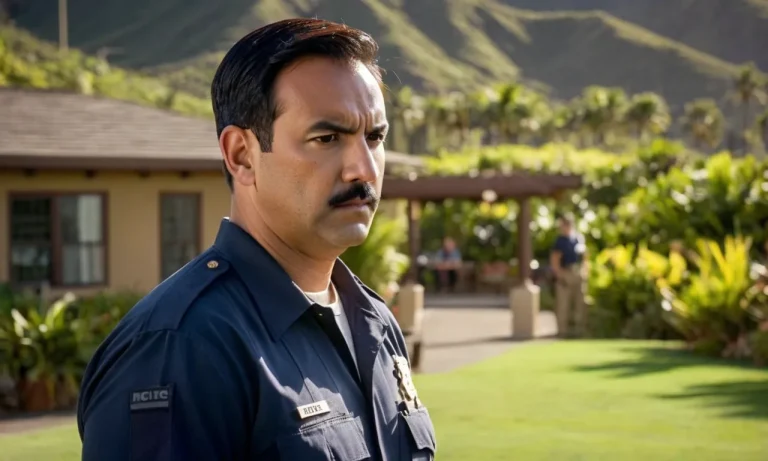Save money on your next flight
Skyscanner is the world’s leading flight search engine, helping you find the cheapest flights to destinations all over the world.
The Hawaiian Islands have a long and complex history, filled with periods of independence, colonization, revolution, and annexation. In the late 19th century, the issue of Hawaii’s political status came to the fore, culminating in Hawaii becoming the 50th state of the United States of America in 1959. This momentous event was the result of many factors, including economic ties, military interests, political movements, and cultural impacts.
If you’re short on time, here’s a quick answer: After a period of British and American influence in the early 1800s, an independent Kingdom of Hawaii was established. However, American business and political interests continued to shape events in Hawaii. Despite native Hawaiian opposition, Hawaii was annexed as a U.S. territory in 1898 during the Spanish-American War. After decades of territorial status, Hawaii finally became the 50th U.S. state in 1959 after a referendum demonstrated widespread support among Hawaiian residents.
The Ancient Kingdom of Hawaii
The history of Hawaii dates back thousands of years, with the islands being settled by Polynesians who arrived from other Pacific islands. These early settlers developed a complex society and a unique culture that thrived in isolation for centuries. The islands were ruled by a system of chiefs, with each island having its own ruler.
The Unified Kingdom under Kamehameha I
In the late 18th century, a warrior chief named Kamehameha I emerged as a powerful leader and sought to unify the islands under his rule. Through a series of strategic alliances and military conquests, Kamehameha I was able to establish the Kingdom of Hawaii in 1810, bringing all the major islands under his control. This unification marked a significant turning point in Hawaiian history.
Kamehameha I’s reign brought stability and prosperity to the islands. He implemented a centralized government and promoted trade and agriculture. The kingdom saw advancements in agriculture, with the introduction of new crops such as sugar cane and pineapples. The population also increased, with immigrants from various countries contributing to the cultural diversity of Hawaii.
Foreign Influences in Hawaii
As Hawaii’s fame spread, it attracted the attention of foreign powers. In the 19th century, American and European traders and missionaries arrived on the islands, bringing with them new technologies, ideas, and influences. The introduction of Christianity, for example, had a profound impact on Hawaiian society.
Western influence also brought about changes in governance. In 1893, a group of American businessmen and politicians overthrew the Hawaiian monarchy, leading to the establishment of a provisional government. However, this was met with resistance from the Hawaiian people, who sought to restore their independence.
The annexation of Hawaii by the United States in 1898 further solidified the foreign influence on the islands. Hawaii became a territory of the United States, and its people became U.S. citizens. Over the years, Hawaii’s economy and culture continued to evolve, blending indigenous traditions with influences from around the world.
Today, the rich history of the ancient Kingdom of Hawaii is celebrated and preserved in the cultural traditions and landmarks of the islands. Visitors can explore historic sites, learn about the Polynesian voyagers who first settled the islands, and discover the story of Hawaii’s journey from an ancient kingdom to a modern state.
For more information about the history of Hawaii, you can visit https://www.to-hawaii.com/history.php.
Establishment of the Independent Hawaiian Kingdom
The establishment of the independent Hawaiian Kingdom was a significant milestone in the history of Hawaii. This period marked the transition from a fragmented group of islands to a unified nation with a central government. Several key events and reforms played a crucial role in the formation of the Kingdom.
Western Trade and Influence
The arrival of European explorers in the late 18th century marked the beginning of Western trade and influence in Hawaii. British Captain James Cook was one of the first to make contact with the islands in 1778. This encounter led to increased trade between the Hawaiians and the Western world, primarily in sandalwood and whaling industries. The introduction of new goods, technology, and ideas had a profound impact on Hawaiian society and set the stage for further developments.
The Mahele Land Reforms
The Mahele, which means “division” in Hawaiian, was a series of land reforms implemented in 1848. This system aimed to modernize land ownership and establish clear property rights. Under the Mahele, land was divided into three categories: Crown Lands, Government Lands, and Konohiki Lands. The reforms allowed individuals to own land through a fee-simple system, opening up opportunities for economic growth and investment.
The 1874 Constitution
The 1874 Constitution of the Kingdom of Hawaii played a pivotal role in establishing a framework for governance. This constitution provided for a bicameral legislature, consisting of a House of Nobles and a House of Representatives. It also recognized the monarch as the head of state and granted certain rights to the citizens. The adoption of this constitution marked a significant step towards a more democratic system of government in Hawaii.
The establishment of the independent Hawaiian Kingdom was a complex process that involved various political, economic, and social changes. These developments laid the foundation for the eventual unification of the islands and the eventual pursuit of statehood. For more information on the history of Hawaii, you can visit www.hawaiiankingdom.org.
The Overthrow of the Monarchy
The history of Hawaii’s path to statehood begins with the overthrow of the monarchy. This pivotal event marked a significant turning point in the islands’ political landscape and set the stage for their eventual unification with the United States.
The Bayonet Constitution
In 1887, a group of American and European businessmen drafted what became known as the Bayonet Constitution. This document severely restricted the power of the Hawaiian monarchy and disenfranchised many native Hawaiians. It effectively transferred control of the government to the hands of these foreign businessmen, who sought to protect their economic interests on the islands. The Bayonet Constitution paved the way for the eventual overthrow of the monarchy.
The 1893 Overthrow
In 1893, a group of American businessmen and politicians, with the support of the United States government, orchestrated the overthrow of Queen Liliuokalani. The queen had sought to restore power to the monarchy and reverse the effects of the Bayonet Constitution. However, her efforts were met with resistance from those who sought to maintain their control over Hawaii’s resources. With the backing of the United States military, the group successfully overthrew the queen and established a provisional government.
Brief Republic of Hawaii
Following the overthrow of the monarchy, the Republic of Hawaii was established in 1894. This new government, led primarily by the same group of American businessmen and politicians, sought to secure Hawaii’s status as a territory of the United States. However, their efforts faced opposition from both native Hawaiians and those who opposed American expansionism. The Republic of Hawaii existed for five years before eventually being annexed by the United States in 1898.
The overthrow of the monarchy in Hawaii was a controversial and complex event that shaped the islands’ future. It highlighted the tension between native Hawaiians and foreign interests, and ultimately led to Hawaii’s eventual statehood. To learn more about the history of Hawaii’s statehood, you can visit the National Park Service website.
Annexation and Territorial Status
The unification of Hawaii as a state is a fascinating journey that began with its annexation and the establishment of its territorial status. Let’s delve into the details of this remarkable historical process.
Strategic Importance of Hawaii
Hawaii’s strategic location in the Pacific Ocean made it a coveted territory for numerous nations throughout history. Its position as a natural crossroads between Asia and the Americas made it a valuable site for trade, military operations, and geopolitical influence. The islands’ abundant resources, such as sugar and pineapple, further enhanced their significance, attracting foreign interest.
1898 Annexation
In 1898, Hawaii was officially annexed by the United States. This came after a period of political unrest and controversy surrounding the overthrow of the Hawaiian monarchy in 1893. The annexation was driven by economic and strategic motives, as well as the desire to establish a stronger presence in the Pacific region.
1900 Organic Act Establishes Territory
Following the annexation, the United States enacted the Organic Act of 1900, which established Hawaii as a territory. Under this act, Hawaii was granted limited self-governance and representation in the U.S. Congress. The territory’s administration was led by a governor appointed by the President of the United States.
Native Hawaiian Resistance
The unification of Hawaii as a state was not without opposition. Native Hawaiians, who had experienced the overthrow of their monarchy and the loss of their sovereignty, resisted the annexation and territorial status. They fought to preserve their cultural heritage and reclaim their political autonomy. The struggle for Native Hawaiian rights and self-determination continues to this day.
Statehood and Aftermath
After the end of World War II, the push for statehood for Hawaii gained momentum. The islands had been a territory of the United States since the overthrow of the Hawaiian monarchy in 1893. However, the strategic importance of Hawaii during the war highlighted the need for it to become a fully-fledged state. The military presence on the islands and the support of key politicians paved the way for Hawaii’s path to statehood.
Push for Statehood After WWII
Following the end of World War II, Hawaii experienced a surge in economic growth and population. This led to increased pressure for statehood, as the islands were no longer seen merely as a military outpost but as a vital part of the country’s economy. The sugar and pineapple industries, which had been the backbone of Hawaii’s economy, played a significant role in lobbying for statehood. They argued that statehood would bring stability and protection for their interests.
The political climate in the United States also favored the push for statehood. The Democratic Party, which controlled Congress at the time, generally supported the idea of Hawaii becoming a state. President Harry S. Truman, a Democrat, voiced his support for statehood and urged Congress to pass legislation to initiate the process.
1959 Statehood Referendum
In 1959, a referendum was held in Hawaii to determine whether the islands should become a state. The majority of Hawaiians voted in favor of statehood, with 94% supporting the move. This overwhelming support demonstrated the desire of the people to be fully integrated into the United States. On August 21, 1959, President Dwight D. Eisenhower signed the statehood proclamation, officially making Hawaii the 50th state of the United States.
Native Hawaiian Sovereignty Movement
While statehood brought numerous benefits to Hawaii, including increased federal funding and representation in Congress, it also sparked a movement advocating for Native Hawaiian sovereignty. Native Hawaiians, who had suffered the loss of their land and culture during the annexation of Hawaii, sought to reclaim their rights and self-governance.
The Native Hawaiian sovereignty movement has gained traction in recent decades, with various organizations advocating for the recognition of Native Hawaiian self-determination. These groups argue for the restoration of Hawaiian sovereignty and the protection of Native Hawaiian lands and cultural practices. While the movement continues to evolve, it serves as a reminder of the complex and multifaceted history of Hawaii’s path to statehood.
Conclusion
The complex history of Hawaii’s unification with the United States lasted over a century, shaped by both internal and external forces. While statehood brought many benefits, the legacy of Hawaii’s loss of independence remains controversial. Native Hawaiian culture has undergone major changes but retains a strong sense of identity. The islands’ strategic location made Hawaii’s fate a key interest of American foreign policy. Statehood solidified Hawaii’s American identity, but for many native Hawaiians, the desire for self-determination continues.
In summary, the unification of Hawaii was driven by economic, political, military, and cultural pressures. After an independent kingdom was established in the 1800s, American business interests eventually overthrew the Hawaiian monarchy. Annexation and territorial status followed, leading to Hawaiian statehood in 1959 after a referendum. However, the legacy of Hawaii’s loss of independence remains complex and disputed by some native Hawaiians.






